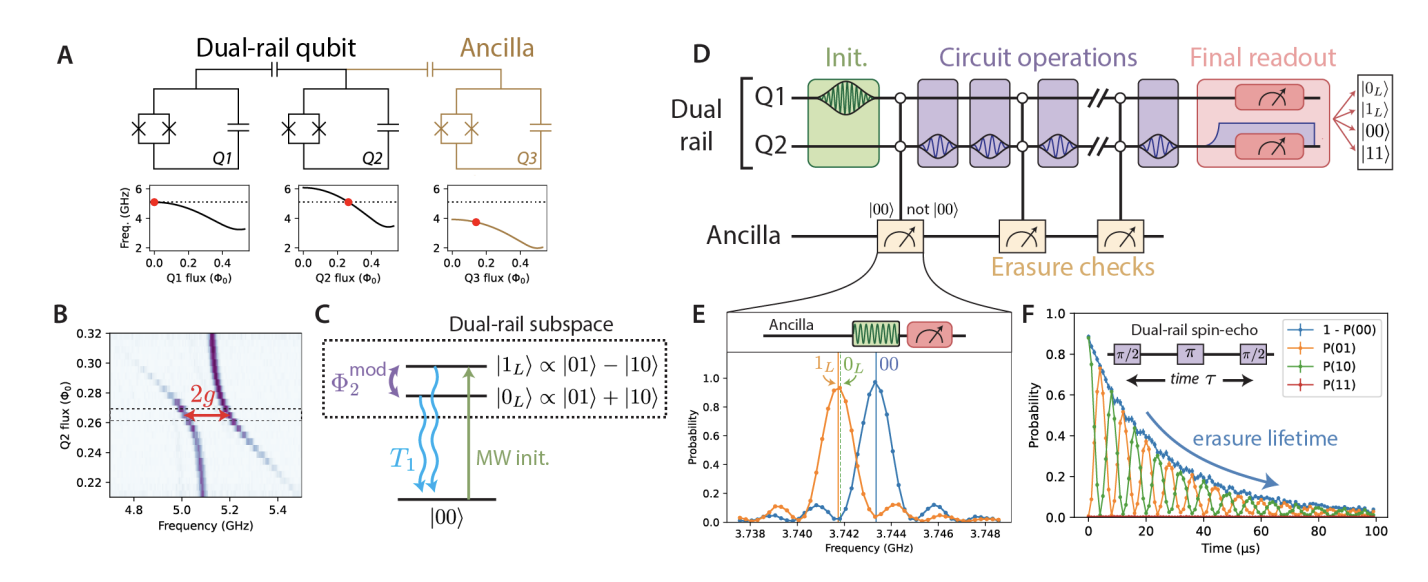Insider Brief
- Scientists from AWS Center for Quantum Computing lead a promising research project on dual-rail qubits that can facilitate longer coherence times and better error management.
- Dual-rail qubits consist of a pair of resonantly-coupled transmons.
- The researchers showed that dual-rail qubits remain coherent for milliseconds, which is a long time for quantum states.
Quantum computing, with its immense promise and potential, has always faced a daunting obstacle: noise. The fragile nature of quantum states makes them susceptible to errors, leading to a loss of information and computational power. Quantum error correction (QEC) is a pivotal field of research aimed at mitigating these errors and bringing quantum computers closer to their full potential.
A team of researchers, led by scientists from the AWS Center for Quantum Computing, now report that a “dual-rail qubit” approach may offer a promising new path to longer qubit coherence times and improved quantum error correction.
According to the research team, which published its findings on the pre-press server ArXiv, traditional error correction methods involve identifying and correcting errors that occur within the quantum computational subspace. However, these approaches may not be the most efficient for all types of qubits. Erasure qubits feature the primary error mode that involves leakage out of the computational subspace. Harnessing the unique advantages of erasure error correction could be a game-changer for quantum computing.

In The Quantum World, A Millisecond Is A Lifetime
The researchers demonstrated the viability of a dual-rail qubit as a highly coherent erasure qubit. This qubit consists of a pair of resonantly-coupled transmons, and its defining feature is that nearly all errors manifest as erasure errors. The dual-rail qubit showcases millisecond-scale coherence within its subspace, a remarkable achievement given that for quantum states, a millisecond is a lifetime.
The key advantage of erasure qubits lies in their ability to achieve more favorable error thresholds compared to standard error correction methods. The suppression of residual dephasing in these dual-rail qubits ensures that erasure errors become the dominant error type, making them easier to detect and correct. Single-qubit gates are primarily affected by erasure errors, with an impressively low erasure probability per gate.
One of the more interesting advances reported in the paper is the system’s ability to detect erasure errors in real-time during mid-circuit operations, a feat previously thought to be extremely challenging. The introduction of dephasing errors per check is less than 0.1%, ensuring that the detection process does not compromise the qubit’s coherence.
The ability of this dual-rail qubit to maintain high coherence over a broad tunable operating range also offers an unique advantage. By reducing the likelihood of frequency collisions, it provides an improved capacity for avoiding errors caused by environmental noise.
More work will likely follow, according to the team.
They write: “Subsequent studies may complete the toolbox for operating an erasure surface code, including developing two-qubit gates between dual-rail pairs, re-initializing dual-rail qubits after erasure errors, and exploring novel erasure detection mechanisms.”
The AWS team was also joined by scientists from the Hebrew University of Jerusalem, the Pritzker School of Molecular Engineering, University of Chicago; the Institute for Quantum Information and Matter, California Institute of Technology, Thomas J. Watson, Sr., Laboratory of Applied Physics and Kavli Nanoscience Institute.
For more market insights, check out our latest quantum computing news here.
















